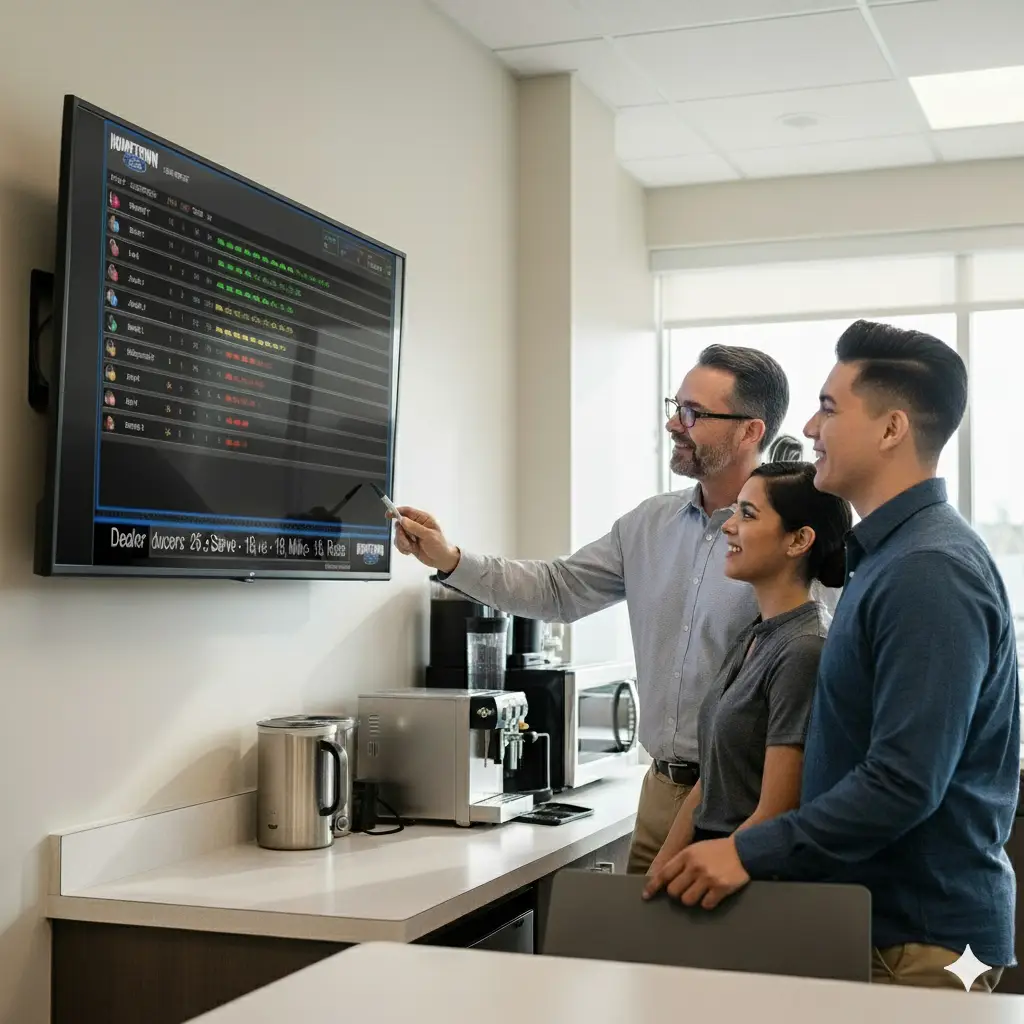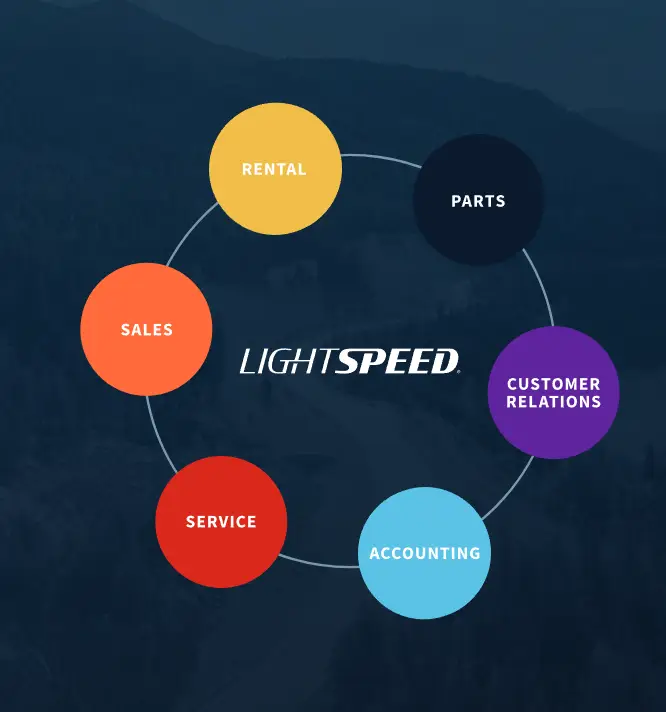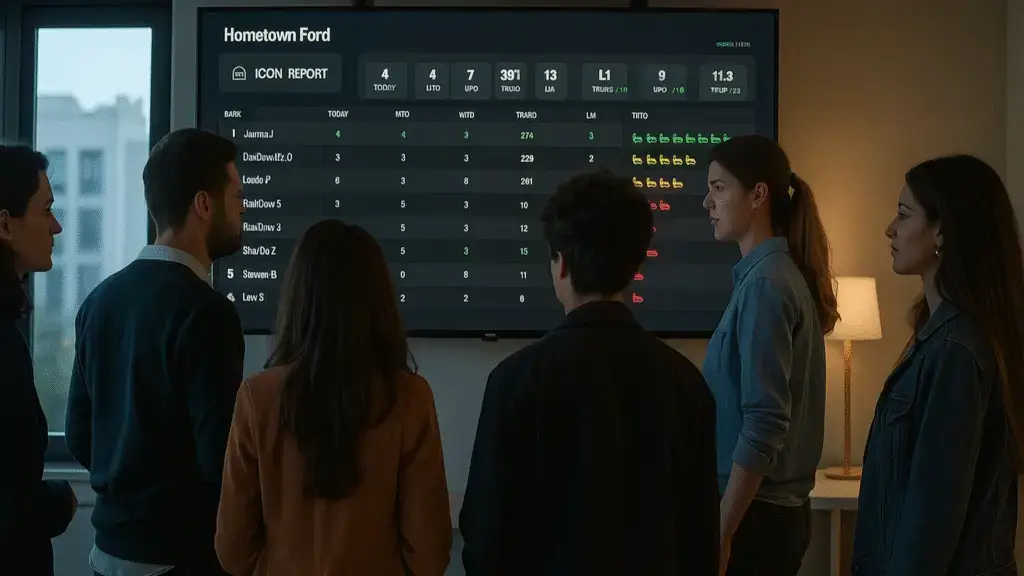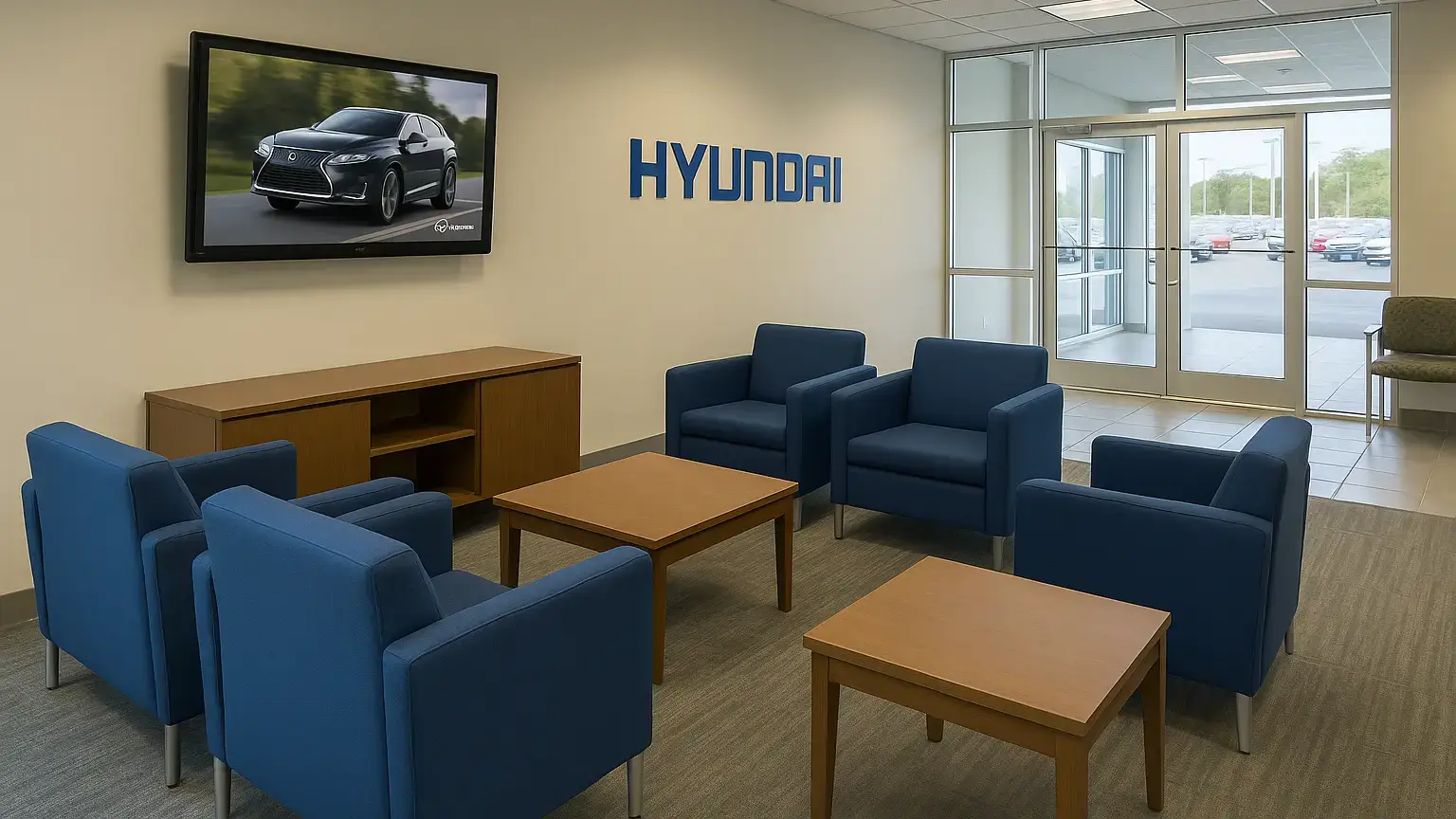Running a dealership can feel like juggling too many balls at once. Staying on top of sales, inventory management, and customer relationships is no small task. And if you’re still relying on old methods—like whiteboards or scattered spreadsheets—you might be falling behind the competition without even realizing it.
At this year’s NADA show in Dallas, Todd Katcher showcased how digital tools are revolutionizing dealerships. Features like real-time dashboards and automated updates save hours while reducing mistakes.
Dealerships that adapt to these technological advancements already see improved efficiency and stronger customer engagement.
Key Takeaways
- Digital tools like CRM systems, AI, and real-time dashboards save time, reduce errors, and improve efficiency in sales and service operations. Dealerships using these tools see better customer satisfaction and higher retention rates.
- Automation reduces manual tasks such as inventory updates or report generation. A dealership saved three hours daily by switching to automated fixed ops boards.
- Real-time data tracking allows managers to react quickly to trends or issues. Instant performance updates boost decision-making, improving sales strategies and marketing campaigns.
- Examples of success include a California dealership increasing customer retention by 15% with CRM tools and another cutting inventory costs by 20% using predictive analytics.
- Mobile integration enhances flexibility. Teams can access inventory or job details on mobile devices, speeding up tasks while keeping customers informed faster.
Importance of Embracing Digital Tools
Digital tools drive growth in today’s competitive auto industry. Modern solutions like AI, CRM systems, and inventory management software simplify daily tasks. They save time, reduce errors, and boost efficiency across departments.
For example, predictive analytics helps dealerships forecast trends and meet customer needs faster.
A strong online presence is no longer optional. Social media marketing attracts leads, while SEO optimization improves search engine rankings. “Effective digital integration turns visitors into loyal customers.” Tools like personalized marketing or automated CRMs enhance the customer journey at every touchpoint, increasing satisfaction and loyalty over time.
Reducing Human Error with Automation
Automation cuts down mistakes. Auto-generated reports replace manual data entry, which often leads to errors. Updating customer relationship management (CRM) systems in real-time helps manage inventory and sales without slip-ups.
Relying on outdated tools like once-daily Google Sheets updates increases the chances of oversights.
Automated tools streamline communication and keep everyone on the same page. For example, sales teams can easily access up-to-date numbers, reducing disputes over data accuracy. Inventory tracking becomes seamless too, saving time while boosting customer satisfaction with accurate orders every time. Automation doesn’t just save time—it saves relationships.
Improving Operations & Department Efficiency
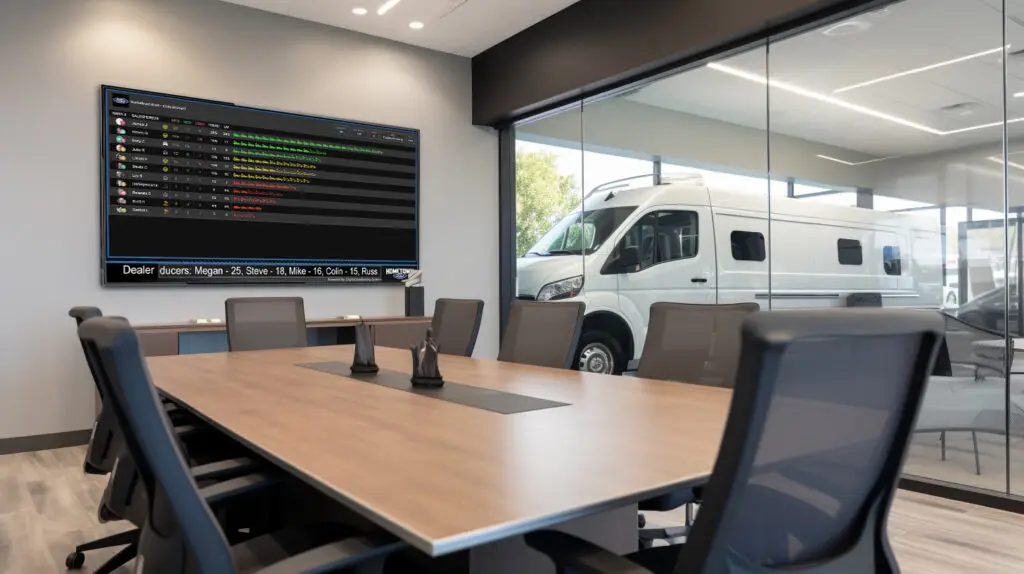
Boosting efficiency in the service department can save time and increase profits. Automation and better tools reduce errors and improve customer satisfaction.
- Automate routine tasks to save time and cut mistakes. Tools like CRM-integrated systems streamline scheduling, updates, and reminders for staff and customers.
- Use real-time data to track performance. This provides visibility into operations, letting managers quickly fix bottlenecks or delays.
- Implement inventory management systems to keep parts stocked properly. Avoid shortages that slow repairs or annoy customers.
- Artificial intelligence (AI) tools can forecast demand for services based on customer behavior patterns, helping plan schedules smartly.
- Offer seamless desktop and mobile integration for your team. Technicians access job details on devices, speeding up task completion.
- Invest in predictive analytics to anticipate maintenance needs before problems arise, boosting trust with repeat customers.
- A dealership group recently saved three hours daily by using automated fixed-ops boards, proving the impact of digital transformation in this space.
- Prioritize training programs for employees on digital tools to ensure smooth adoption without resistance or confusion.
- Optimize workflows with connected cars technology to report diagnostics faster, leading to quicker resolutions for clients’ vehicles.
- Focus on reducing human error while enhancing accuracy with automated checkpoints during inspections or invoicing stages.
Enhancing Sales Operations with Digital Systems
Digital systems make sales operations smoother for auto dealers. They save time, cut errors, and boost efficiency.
- A digital sales leaderboard replaces outdated dry-erase boards. Sales teams can see live updates and track goals at a glance.
- Automation reduces manual tasks—no more countless hours spent on updates. This allows staff to focus on customers and sales strategies.
- CRM tools improve customer engagement. These systems help track leads, schedule follow-ups, and monitor buyer behavior.
- Data analytics tools help in making informed decisions by showing trends in customer preferences and pricing strategies.
- Mobile integration gives sales teams instant access to inventory management info—even from the lot or showroom floor.
- Online presence increases lead generation through SEO optimization, social media marketing, and targeted ads that reach more potential buyers.
- Personalized interactions become easier with AI-powered insights, boosting customer satisfaction with customized solutions.
- Instant reporting keeps managers updated on performance analytics like closing rates or campaign success without delay.
Sales thrive when supported by advanced tools and data-driven decisions!
Customization, Performance, & Flexibility of Digital Dashboards

Dealerships thrive with flexible digital dashboards. Modular systems let managers craft setups based on specific needs. Salespeople can access their own reporting consoles, boosting accountability and focus.
Fixed ops teams gain interactive tools for monitoring inventory or improving BDC boards. These features streamline workflows while enhancing overall efficiency.
Large dealership groups benefit too. Some platforms allow centralized sign-ins to monitor multiple stores at once, simplifying oversight. This flexibility makes adapting to market changes easier, saving time and reducing stress during high-pressure periods in the automotive industry.
Real-Time Data and Performance Tracking
Real-time data keeps your dealership ahead of the curve. General managers and dealer principals get instant updates on their phones, no matter where they are. This means faster reactions to sales dips or service slowdowns.
Switching between store performance views is simple, allowing you to compare locations in seconds. Automated end-of-day notifications ensure nothing slips through the cracks, giving leaders a clear snapshot before they even head home.
Quick access to performance analytics allows smarter decisions on inventory management and marketing campaigns. Imagine adjusting your strategy mid-day based on fresh numbers rather than outdated reports.
Predictive analytics steps in here, offering insights into customer preferences and buying patterns. The cherry on top? Better decision-making leads directly to boosted customer satisfaction and higher profits for your team.
Benefits of Mobile and Desktop Integration
Mobile and desktop integration bridges gaps in dealership operations. Staff can access digital dashboards from anywhere, making updates seamless. A sales manager might check inventory on a tablet while walking the lot, saving time and energy.
Mobile notifications alert staff immediately about important tasks or changes.
This setup ensures real-time data flow between devices. Leaderboards update instantly, keeping everyone informed on performance stats without delays. Customers notice this efficiency, too—it enhances their experience by cutting waiting times and ensuring accurate information is always at hand.
Customer Perception and Overcoming Resistance to Change in Dealerships

Change often faces pushback, especially in dealerships with long-standing leadership. Many managers stick to traditional methods that feel safe and familiar. Comfort zones can quickly become barriers.
Staff may worry about learning digital tools or fear job losses from automation.
Start small with training programs on customer relationship management (CRM) and inventory optimization tools. Show how these systems save time and reduce human error. Celebrate quick wins, like better customer satisfaction or faster sales processes, to build trust in new methods.
Resistance fades when teams see value firsthand—like improved performance analytics highlighting success rather than mistakes.
Impact on Customer Perception
Digital tools can make your dealership look modern and professional. Customers notice sleek digital displays, AI-powered tools, and organized systems. These features create trust and show that the dealership values efficiency.
Outdated methods, like using dry-erase boards or messy paperwork, send a bad message.
A strong online presence improves customer engagement before they even step inside. Personalized marketing strategies use data analytics to target specific consumer preferences. This makes customers feel valued and understood, boosting loyalty and satisfaction levels. In today’s competitive market, these small details set you apart from others in the automotive industry.
Additional Insights on Digital Tools

Digital tools don’t just fix problems—they spark new ideas. These systems grow and adapt, keeping your business sharp in a competitive market.
Modular System Components
Modular tools offer customized solutions for automotive needs. Dealerships can use these components to meet specific goals in areas like finance, inventory management, or fixed operations.
For example, advanced inventory optimization modules track stock in real-time. This reduces excess vehicles while boosting sales opportunities.
Flexibility plays a key role here. Business Development Centers (BDCs) might prioritize communication systems, while service departments focus on scheduling software. The ability to combine features gives dealerships the agility to adapt quickly in a competitive market.
Modular systems streamline supply chain management and improve return on investment with smarter integrations.
Continuous Development Based on Feedback
Using dealer feedback has transformed digital tools in the automotive industry. A system that once offered only eight sales reports now provides 25, showing massive growth. This shift highlights a focus on listening to dealer needs and adapting quickly.
Tools like automated CRM systems and data-driven dashboards improve not just functionality but trust with users.
Listening creates better results for dealerships. By focusing on customer engagement and inventory optimization, these systems meet real-world demands. Dealers see faster updates and more useful features because their input shapes development directly.
Examples of Successful Implementations
Digital tools have revolutionized dealerships, proving their worth in real examples. These success stories demonstrate how adopting technology creates better results for leaders in the automotive industry.
- A dealership in Orange County, California, integrated CRM tools with automated systems. This upgrade boosted customer retention rates by 15% through personalized interactions and streamlined follow-ups.
- An auto group focused on inventory optimization by applying predictive analytics and AI-driven insights. Their carrying costs dropped by 20%, giving them a competitive edge in a tough market.
- A mid-sized dealership utilized social media marketing to improve its online presence. Targeted ads and Facebook marketing helped generate 20% more leads within three months.
- Another dealer adopted an AI chatbot to improve customer management and service inquiries. The virtual assistant reduced response times while significantly increasing customer satisfaction scores.
- A large franchise revamped its sales operations using performance analytics dashboards. Real-time tracking led to data-driven decisions, boosting conversion rates and refining their digital marketing efforts.
- One store shifted to mobile-integrated VIN decoding software for faster appraisals during trade-ins. This update sped up evaluations, offering customers quicker responses, building loyalty in return.
- By implementing SEO optimization on their website, another dealer enhanced brand awareness online while improving lead capture form completion rates by 30%.
- A service department embraced IoT-powered tools for seamless diagnostics and updates on vehicles in repair bays. Efficiency improved dramatically, leading to faster turnaround times for clients.
- In an effort to align with rising consumer expectations, one dealership launched personalized marketing campaigns driven by big data insights, enhancing overall customer engagement metrics.
- Training programs rolled out across a multi-location group educated staff about new cutting-edge tools like automated CRM platforms—resulting in smoother adoption processes without resistance from employees.
Each example highlights the real value these innovations bring daily!
How to Choose the Right Digital Tools

Finding the right digital tools for your dealership can feel overwhelming. Focus on what best aligns with your business needs and customer expectations.
- Focus on tools that enhance customer experience. Solutions like automated CRM systems or predictive analytics streamline interactions, making customers feel valued.
- Assess how the tool improves inventory management. Platforms enabling real-time tracking or VIN decoding make stock organization and decision-making more efficient.
- Look for mobile and desktop compatibility features. Tools that work across multiple devices ensure smooth operations and enhance staff flexibility.
- Place importance on simplicity in system usage. Overly complicated platforms can hinder employees, while intuitive systems save time and minimize errors.
- Explore adaptable options. Digital dashboards customized to your dealership’s performance metrics support better data-driven decisions.
- Select tools offering dependable service support plans. Reliable assistance prevents downtime and helps maintain efficiency in a competitive market.
- Examine their impact on marketing strategies like Facebook marketing or SEO optimization to boost online presence and lead generation.
- Compare pricing while considering long-term benefits, such as automation reducing labor costs or AI enabling targeted advertising campaigns.
- Choose tested solutions used by other dealerships in similar markets, such as Get My Auto for localized services like Orange County, California.
- Opt for scalable tools that adapt to your dealership’s future needs, particularly in marketing tools or social media strategies.
- Evaluate their ability to monitor real-time performance analytics, providing crucial insights for improving sales operations and customer engagement efforts.
- Keep informed on tech developments such as IoT integration or virtual assistants that transform modern dealership experiences and consumer expectations.
Conclusion

Going digital is no longer optional—it’s a must. Tools like automated CRM, real-time data tracking, and performance dashboards can reshape your dealership. They simplify tasks, improve accuracy, and save time you’d rather not waste.
Digital solutions also boost customer satisfaction by tailoring experiences to fit their needs. Start small with mobile integration or inventory management tools if you’re unsure where to begin.
Think about how improved efficiency could drive sales and engagement in your business. Don’t let fear of change hold you back—embrace it! Take the leap today and give your dealership a competitive edge that customers will notice immediately.
FAQs
1. What is digital transformation in the automotive industry?
Digital transformation means using advanced tools like predictive analytics, customer relationship management (CRM) systems, and artificial intelligence (AI) to improve dealership operations. It helps optimize inventory, boost customer satisfaction, and meet modern consumer expectations.
2. How can digital tools enhance customer experiences at a dealership?
Digital tools allow personalized interactions through targeted advertisements, social media marketing, and automated CRM systems. These tools also enable seamless online shopping options and better customer service by analyzing data for tailored solutions.
3. Why is an online presence important for dealerships today?
An online presence builds trust with customers while capturing leads through SEO optimization and lead capture forms. Social media platforms like Facebook’s ad campaigns or online classifieds give dealerships a competitive edge in a crowded market.
4. How do predictive analytics help with inventory management?
Predictive analytics uses data-driven decisions to optimize inventory levels based on trends and demand forecasts. This reduces waste while ensuring high-demand vehicles are always available for buyers.
5. Can adopting digital marketing strategies increase sales for dealerships?
Yes! Digital marketing strategies such as social media advertising, website optimization, and strategic ad campaigns attract more customers by targeting their specific needs—leading to higher engagement rates and improved conversion rates.
6. What steps should dealers take to start their digital transformation journey?
Start small but think big: focus on training programs for staff to use cutting-edge tools like VIN decoding software or IoT devices effectively. Build a strategic vision that includes change management processes while prioritizing customer-centric approaches like personalized marketing efforts or performance analytics tracking systems for long-term growth!

